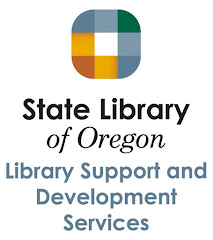Kennedy, Marie R. and Cheryl LaGuardia. Marketing Your Library’s Electronic Resources: A How-To-Do-It Manual for Librarians. Second Edition. Neal-Schuman, 2018. ISBN: 978-0-8389-1565-3
Description
A practical guide for marketing library resources, this new edition has been updated with additional marketing plan examples for public, community college, technical college, and university academic libraries.
Table of Contents
Part I How to Design Your Marketing Plan
Chapter 1 Determine the Purpose of Your Marketing Plan
What You Can Discover about Your E-resources Right Now
- Usage Statistics
- Cost
- Cost-Per-Use
- Advanced Data Considerations
Speak with One Message
Everybody Does the Marketing
When Does the Marketing Happen?
Be Mindful of Competing Interests
The Evolving Formats and Methods of E-content Delivery
Marketing Makes Your Patrons Smarter
Gather the Troops
References
Chapter 2 Fashion Your Marketing Plan
Components of a Marketing Plan
- Project Description
- Current Market
- SWOT Analysis
- Target Market
- Goals
- Strategy
- Action Plan
- Measurement
- Assessment
Recommended Resources for Further Reading
References
Chapter 3 Implement Your Marketing Plan
Components of a Marketing Plan, with Examples
- Project Description
- Current Market
- SWOT Analysis
- Target Market
- Goals
- Strategy
- Action Plan
- Measurement
- Assessment
Marketing Your Electronic Resources Can Change Your Library
Recommended Resources for Further Reading
References
Chapter 4 Construct Your Written Marketing Plan Report
Write for Your Audience
Address the Components in Your Report
- Executive Summary
- Current Market and Target Market
- Goals, Strategies, and Proposed Measurements
- Timeline, Staff, and Budget
This Marketing Grant Request Form Caught Our Eyes!
Wrap It Up
Chapter 5 Assess Your Marketing Plan
First, Take a Good, Long, Hard Look at Your Library Website
- About Social Media for Marketing
- Changing Your Web Presence
Then, Take a Good, Long, Hard Look at Your Electronic Resources
Now, Ask Yourself Assessment Questions
- A Rubric May Help
- Some Practical Considerations for the Assessment of Your Marketing Plan
Market Your Electronic Resources Ethically
Recommended Resources for Further Reading and Support
References
Chapter 6 Revise and Update Your Marketing Plan (“Lather, Rinse, and Repeat”)
Give Yourself Time to Think
- Project Description
- Current Market
- SWOT Analysis
- Target Market
- Goals
- Strategy
- Action Plan
- Measurement
- Assessment
Revise Your Plan
Communicate Your Successes or Failures in Marketing
References
Part II Sample Marketing Plan Reports
Example
1 Marketing Plan from an All-Electronic Library: Statewide Marketing
and Communications Plan, NOVELNY: New York Online Virtual Electronic
Library
Goals and Objectives
Campaign Planning
Research Overview
Situation Analysis
Barriers to Access and Use
OCLC Study Provides Clear Direction
Ten Issues: Ten Strategies
Mass Customization and Segmenting the Market
Target Audience: General Consumer Population
Target Audience: Executive Office, State Legislature Elected Officials and Aides, and Board of Regents
Target Audience: Public Librarians
Target Audience: Business and Economic Development Sector
Target Audience: Academic Librarians, College Administrators, and College and University Librarians and Teaching Faculty
Target
Audience: Teachers, Administrators, Students, and Parents in
Elementary, Middle, and High Schools; Homeschoolers and Parent-Teacher
Associations
Target Audience: Parents of One Million Plus Children in Statewide Summer Reading Program
Example 2 Marketing Plan from a Public Library, Sample 1: Winnetka-Northfield Public Library District, “Building a Buzz”
Introduction
Goals
Objectives
Key Audiences
Message
Strategies
Tools
Budget
Impact
Lessons Learned
Example 3 Marketing Plan from a Public Library, Sample 2: Worthington Libraries 2012 Communications and Development Plan
Community Relations Department Staff
Plan Focus Areas
Fundraising and Development
Programming
Public Relations and Marketing
Partnerships and Outreach
Example
4 Marketing Plan from a Community College Library: Maricopa
Community College District Electronic Resources Committee Marketing
Plan, 2013–2016
Introduction
Internal Audiences
Desired Behaviors and Attitudes
Communication Goals
Measures
Communication Channels
MCCCD District System-Level Strategies/Initiatives
The MCCCD 2013–2016 Strategic Planning Goals
ERC Strategic Plan Objective
Implementation Strategies
Example
5 Marketing Plan from a University Library, Sample 1: Milner
Library, Illinois State University 2012–2014 Marketing Plan
Introduction
Objectives
Marketing Strategies
Forms of Publicity
Assessment/Evaluation
Target Audiences
Media Contacts
Public Relations and Marketing Unit Team Members
- Appendix 1: Milner Library Logo
- Appendix 2: Activity Planning Feedback
- Appendix 3: Speaker Assessment Form
- Appendix 4: Target Audience/Specific Media
- Appendix 5: Media Contacts
- Appendix 6: Marketing Timeline for Standing Annual Activities
- Appendix 7: Public Relations/Marketing Request
- Appendix 8: Flier Posting Information; Mailbox Stuffing Information
- Appendix 9: Table Tent Guidelines for Campus Dining Halls
Example
6 Marketing Plan from a Regional Technical College in Ireland:
Galway-Mayo Institute of Technology Library Marketing Plan
Summary
Strategic Overview
Terms of Reference and Scope
GMIT Library SWOT Analysis
GMIT Library’s Main Competitors
Target Markets: User Groups
Analysis of Current Marketing Strategies
Target Market: Undergraduates
Example
7 Marketing Plan from a University Library, Sample 2: Marketing Plan
for Kanopy, William H. Hannon Library, Spring–Fall 2016
Executive Summary
Current Market
Target Market
Goals
Strategies
Proposed Measurements
Timeline
Staff
Budget
Summary
- Appendix A: Kanopy Flyer for Circulation Desk
- Appendix B: Sample E-mail to Faculty Library Representatives
- Appendix C: Digital Signage
- Appendix D: Library Blog Post Draft
- Appendix E: Kanopy Social Media Post












